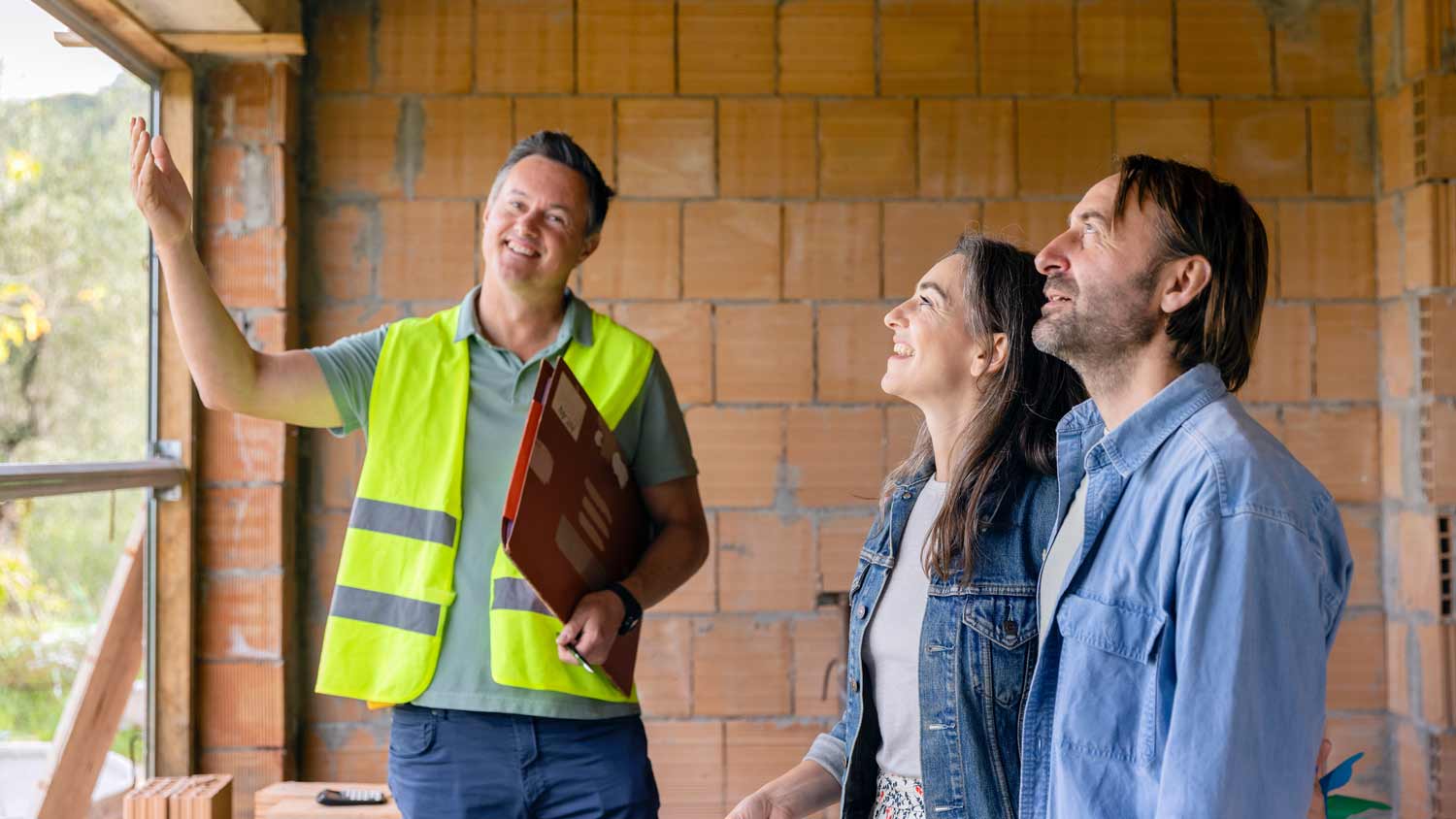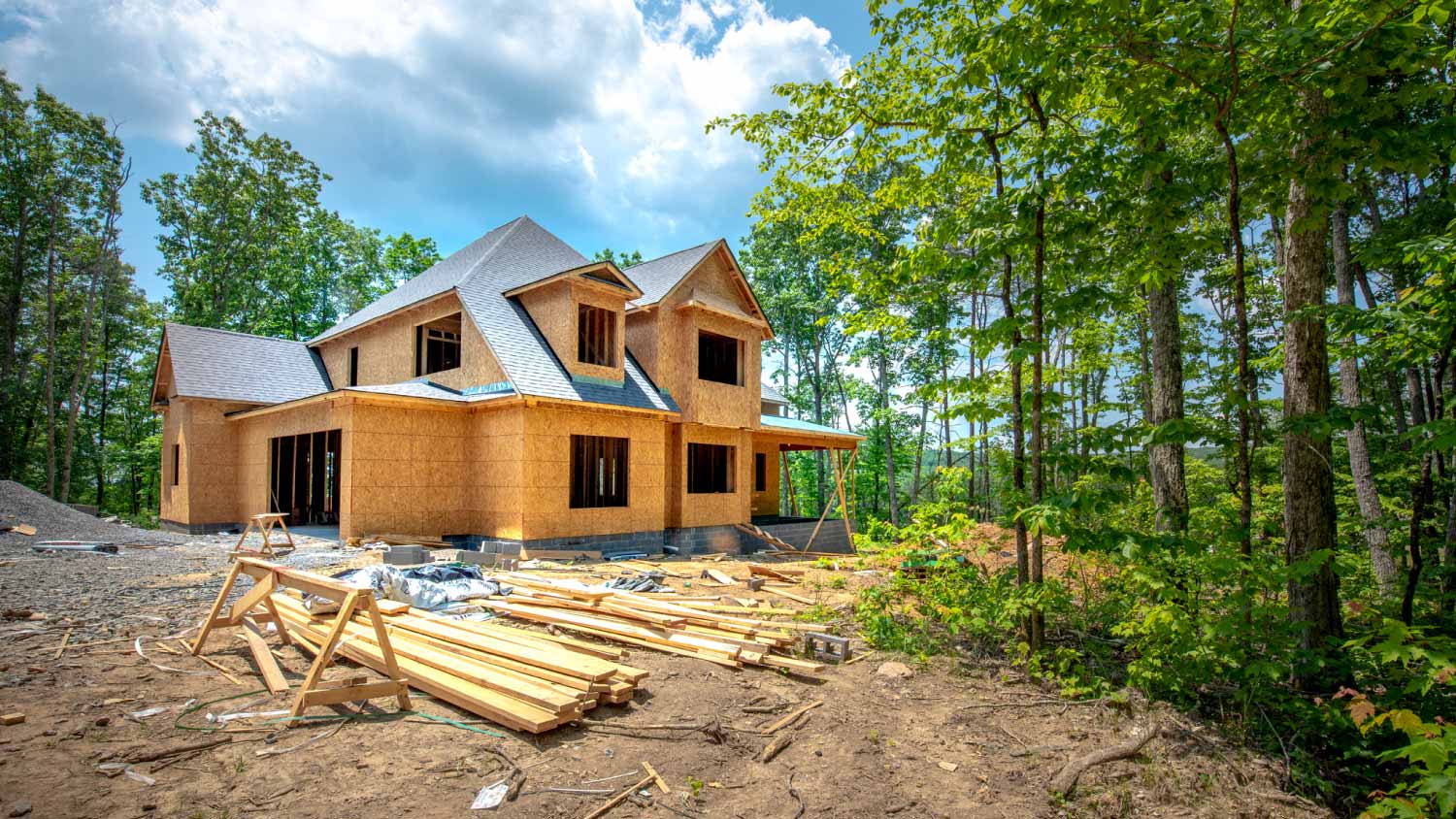
While it isn't easy to expand your property, you can consider building up. The cost of adding a second story has quite the range. We'll break it down here.
The average indoor riding arena cost ranges from $150,000 to $500,000, with most homeowners spending between $180,000 and $450,000. Size, materials, and custom features are the main cost factors.


The cost of an indoor riding arena depends on its size, materials, and features.
Customization, climate control, and footing type impact the total price.
Hiring experienced pros to build your arena ensures safety and long-term durability.
Regional prices and permit requirements can affect your budget.
Investing in an arena can boost your property value and offer equestrian enjoyment.
This article was created using automation technology and thoroughly fact-checked and edited by an Angi Editor in accordance with our AI policy.
Indoor riding arena costs are a significant investment for equestrian property owners, with most projects averaging between $180,000 and $450,000, or an average of $325,000. Expect to pay between $40 and $125 per square foot, depending on the arena size, materials, and custom features. Understanding these costs helps you plan your project effectively and avoid unexpected expenses.
Building an indoor riding arena is a significant step for any horse enthusiast or property owner. Let’s explore what drives these costs, how to get the best value, and what to expect at every stage.
Building an indoor riding arena involves several major cost categories, each contributing to the final price. The total cost of the indoor riding arena covers site preparation, foundation, structural framework, roofing, siding, interior finishes, footing, lighting, HVAC, and utility installations. For a standard indoor riding arena, the cost falls between $150,000 and $500,000, but custom features and high-end materials can push the price higher.
Prefabricated arenas tend to be more budget-friendly, while fully custom builds with premium finishes and advanced systems will increase the overall cost. Most homeowners see pricing per square foot ranging from $40 to $125, depending on the level of customization and local market conditions.
| Component | Description | Average Cost Range |
|---|---|---|
| Site preparation | Grading, clearing, drainage | $10,000–$50,000 |
| Foundation | Concrete slab, piers, or footings | $15,000–$60,000 |
| Structure | Steel or wood framing, walls | $60,000–$200,000 |
| Roofing | Metal, shingle, or fabric roof | $20,000–$80,000 |
| Siding | Metal, wood, or composite panels | $15,000–$50,000 |
| Interior finishes | Paint, insulation, kickboards | $8,000–$30,000 |
| Footing | Sand, rubber, fiber, or specialty blends | $15,000–$50,000 |
| Lighting | LED, halogen, or natural light solutions | $5,000–$25,000 |
| HVAC | Heating, ventilation, climate control | $8,000–$40,000 |
| Utilities | Electrical, plumbing, water lines | $8,000–$30,000 |
The size of your indoor riding arena is the single biggest factor influencing cost. Larger arenas require more materials, labor, and time to build. Common sizes include 60 by 120 feet, 80 by 200 feet, and 100 by 200 feet, with costs increasing as the footprint expands.
For basic training and single-horse use, a 60-by-120-foot arena is often sufficient. Jumping or multi-horse activities require at least 80 by 200 feet. The cost per square foot remains relatively consistent, but the total cost rises sharply with increased dimensions.
| Arena Size (Ft.) | Square Footage | Standard Use | Average Cost Range |
|---|---|---|---|
| 60x120 | 7,200 | Basic riding, training | $150,000–$250,000 |
| 80x200 | 16,000 | Jumping, lessons, events | $300,000–$450,000 |
| 100x200 | 20,000 | Multi-horse, competitions | $400,000–$500,000+ |
Several specialized professionals are involved in constructing an indoor riding arena. The general contractor acts as the project manager, overseeing all phases and subcontractors. General contractor fees range from 10% to 20% of the total project cost or a flat fee, typically between $20,000 and $70,000 for most arenas.
Arena construction specialists bring deep knowledge of equestrian needs, handling design, framing, and structural work. Their fees range from $50,000 to $200,000, depending on the complexity and customization required. Unique features or challenging sites can increase these costs.
Footing installation pros are critical for safety and performance. They charge $2 to $8 per square foot for materials and installation, with total footing costs ranging from $15,000 to $50,000. High-performance blends or specialty additives may add to both upfront and ongoing maintenance expenses.
Beyond the core team, you may incur costs for several other professionals to complete a successful indoor riding arena build:
Electrical contractor fees: Installing lighting, outlets, and wiring runs $5,000 to $25,000, depending on the arena’s size and lighting plan.
HVAC specialist: Adding heating, ventilation, or complete climate control costs $8,000 to $40,000.
Plumbing contractor costs: For water lines, washrooms, or restrooms, expect to pay between $3,000 and $15,000.
Structural engineer fees: Design review and code compliance checks cost $2,000 to $8,000.
Architect or designer fees: Custom plans or permitting support run $5,000 to $20,000.
Site grading/excavation contractor: Land clearing and leveling costs $10,000 to $50,000, influenced by site conditions and location.
Where you live significantly affects the cost of an indoor riding arena. Urban areas and regions with high labor or material prices—like the Northeast or West Coast—often see costs at the upper end of the range. Rural locations may offer savings, but transportation of materials and limited contractor availability can offset these benefits.
Climate also impacts design and cost. Regions with heavy snow or extreme temperatures require stronger structures and better insulation, adding to the overall price.
Beyond construction, several other expenses influence your total indoor riding arena cost:
Sales tax on materials and increased property taxes can add thousands to your project.
Insurance during and after build-out is essential, often costing $1,000 to $4,000 per year.
Warranties for the structure, roof, or major systems may be available at an added cost.
Accessories such as mirrors, kickboards, sound systems, observation rooms, tack rooms, storage, and restrooms can add $2,000 to $50,000, depending on the level of finish and customization.
ADA features for accessibility may be required and cost several thousand dollars.
Remote or difficult-to-access sites should expect higher delivery and labor costs.
Repairs or upgrades, as well as post-construction cleanup, can cost $2,000 to $8,000.
If your property already has old barns, sheds, or a previous arena, demolition and site clearing may be needed. Removing existing structures costs between $5,000 and $30,000, depending on size and complexity.
Site grading, drainage installation, and soil preparation are critical and cost $10,000 to $50,000. Environmental or permitting requirements can add time and expense, especially if hazardous materials are present.
Building an indoor riding arena requires multiple permits, including those for building, electrical, plumbing, and zoning. The general contractor often manages this process, but the homeowner is ultimately responsible for compliance. Permit costs vary by region, from $1,000 to $10,000, and the approval process can take several weeks to several months, especially in areas with strict regulations.
Some homeowners consider DIY construction as a way to save on labor costs. Building an indoor riding arena yourself can reduce costs by 20% to 40%, but it requires advanced skills, heavy equipment, and a significant amount of time. DIY is practical for tasks such as site preparation, painting, or installing simple fixtures, but structural framing, roofing, and footing installation should be left to professionals to ensure safety and code compliance.
Managing the project yourself means handling permits, inspections, and coordinating multiple trades. This can be overwhelming and risky if you’re not experienced. Most homeowners find that hiring a local home addition builder provides peace of mind and protects their investment
Remodeling and renovating an arena are not the same. Renovation includes resurfacing the footing, repainting, upgrading lighting, or making minor repairs. These projects cost $10,000 to $50,000 and extend the life of your existing arena.
Remodeling involves expanding the space, adding new features such as HVAC systems, windows, or altering the layout. Full remodels can cost $50,000 to $200,000 or more, depending on the scope.
Consider the age, current condition, and intended use of your arena when determining which approach best suits your needs. Both options can improve usability, safety, and property value, but remodeling has a greater impact on long-term functionality and resale value.
To keep costs down when building an indoor riding arena, consider the following tips:
Choose standard sizes and prefabricated structures.
Source local materials to reduce shipping costs.
Limit custom features or high-end finishes.
Schedule construction during off-peak seasons.
Get multiple quotes from reputable pros.
Consider phased construction (build basic arena first, add features later).
Maintain regular upkeep to avoid costly repairs.
Reuse or repurpose existing site features when possible.
Building an indoor riding arena can increase your property’s value, especially in areas with strong demand for equestrian facilities. The return on investment varies, but high-quality arenas can recoup 50% to 70% of their cost at resale. Location, construction quality, and local market conditions all influence value.
An indoor arena sets your property apart, making it more attractive to buyers or renters who need equestrian amenities. Well-built arenas can also generate rental or boarding income, further boosting your return. For the best results, focus on quality construction and features that appeal to your target market.
Home is the most important place on earth, which is why Angi has helped more than 150 million homeowners transform their houses into homes they adore. To help homeowners with their next project, Angi provides readers with the most accurate cost data and upholds strict editorial standards. We extensively research project costs to develop the pricing data you see, so you can make the best decisions for you and your home. We rely on reputable sources, including the U.S. Bureau of Labor Statistics, academic journals, market studies, and interviews with industry experts—all to ensure our prices reflect real-world projects.
Want to help us improve our cost data? Send us a recent project quote to [email protected]. Quotes and personal information will not be shared publicly.
From average costs to expert advice, get all the answers you need to get your job done.

While it isn't easy to expand your property, you can consider building up. The cost of adding a second story has quite the range. We'll break it down here.

The cost to convert a vaulted ceiling to a second floor depends on factors such as its size, intended function, materials, and the project's complexity.

Discover the cost to build a greenhouse. Learn about average prices, key cost factors, and how to save on your greenhouse project.

Building your dream home starts with hiring a builder. Here is how to find a builder who understands your needs and preferences for your brand-new home.

Planning and construction takes longer when you don’t follow pre-set plans. Learn how long it takes to build a custom home so that you know what to expect.

Dreaming of a custom home but not sure where to start? Use this guide on building a custom home to stay organized and ensure you have all your bases covered.